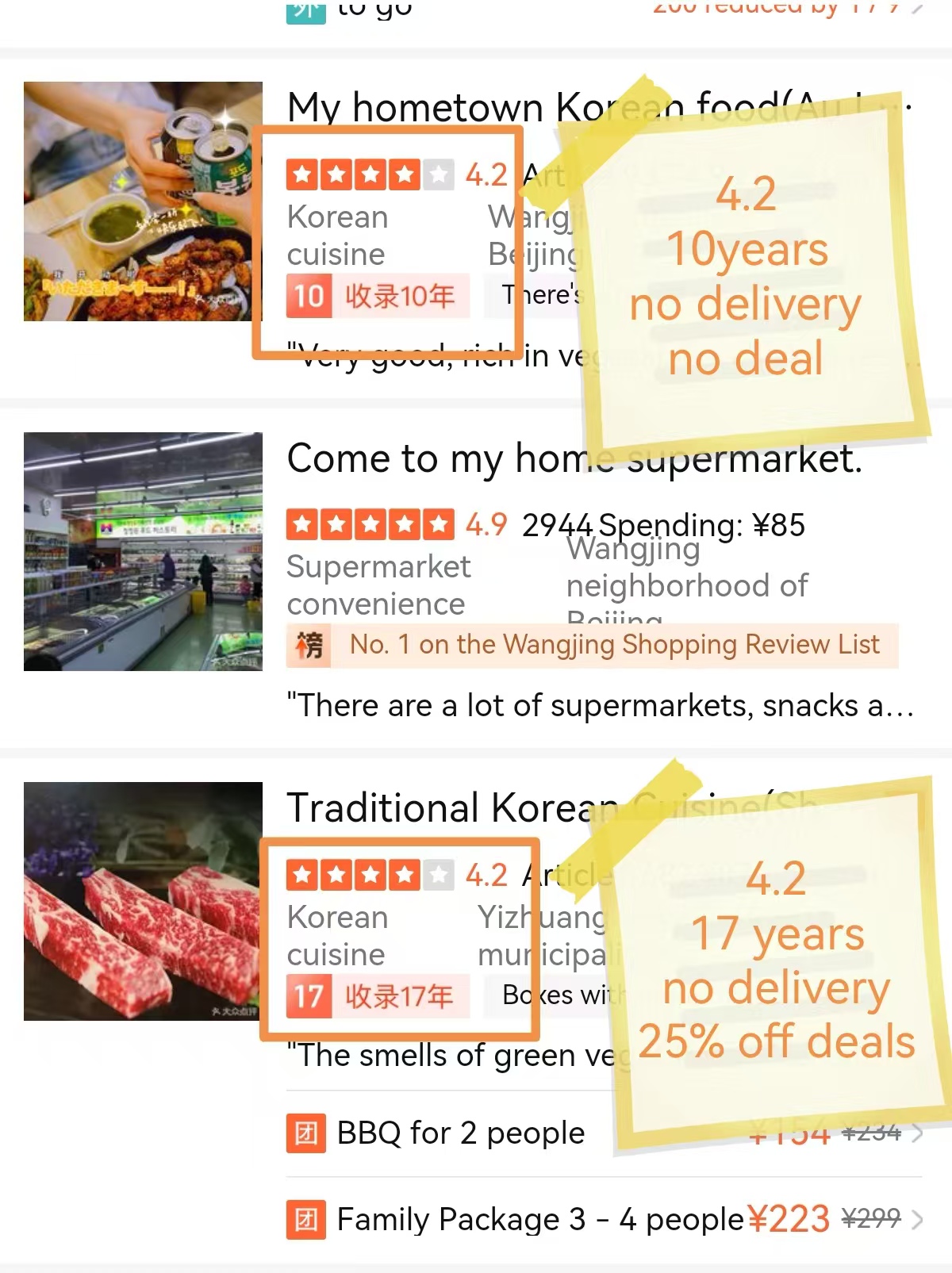Crack Dianping: How to Find Truly Great Restaurants
China Must-KnowDianping is China’s go-to for discovering restaurants and lifestyle experiences, especially among younger users who trust its reputation for authentic reviews. However, like any platform balancing user needs with business, promotional content exists. So you need to use it smartly.
Here are some tips from a decade of my personal experiences to cut through the noise and pinpoint truly top-notch spots. Hopefully it can help you avoid the 'pitfalls'.
First of all, you need to figure out how to set up Dianping.
Well, Dianping offers its platform in a few formats, but for ease of use, especially if you're not familar with Mandarin, the Mini App (WeChat or Alipay) is highly recommended. Here’s why:
- App: It requires a Chinese phone number for registration, which can be a hurdle for you.
- Web: While you can browse on dianping.com, accessing full details requires an account 👆.
- Mini App (Recommended): Using Dianping within WeChat or Alipay allows you to log in with your existing WeChat or Alipay account (which are more accessible to international users). Crucially, the Mini App often has a built-in translation feature that actually works even better than the English version of the standalone Dianping app. This can significantly enhance your navigation and understanding, especially with Chinese reviews and menus.
Understanding the Basics
First, let's familiarize ourselves with the basic information Dianping provides and the built-in translation by mini app.

In terms of evaluating a restaurant, these three key factors matter: Ratings, Longevity, and Reviews.
My 4-Step Strategy For Filtering
This strategy can significantly increases your chances of finding excellent restaurants on Dianping:
- Prioritize Longevity: Trust the Old-Timers
Longevity in the restaurant business often speaks volumes about consistent quality and customer satisfaction. Target those who have been operating for more than five years.
- Target the ‘Sweet Spot’ Rating: Aim for 3.5 to 4.2
Dianping Restaurant Rating Display showing a rating between 3.5 and 4.2
While it might seem counterintuitive, I've found that the most reliable ratings usually fall between 3.5 and 4.2 stars. Extremely high ratings (above 4.5) can sometimes be inflated or less trustworthy. Very low ratings (below 3.5) are generally a red flag, suggesting significant issues with food or service.
- Consider Business Model: No Delivery or Discounted Group Buying – Potentially a Good Sign
Interestingly, I've noticed a pattern: restaurants that do not offer delivery services or heavily discounted group-buying deals sometimes signal higher quality. This isn’t a strict rule, but it's something I consider. Restaurants focusing on dine-in experiences and not heavily relying on promotions might be more confident in their food and service quality.
- Read the Latest Reviews: Fresh Feedback Matters Most
Always, always look at the most recent 10 or so reviews. This is crucial because a restaurant's quality can change over time due to change ownership, chefs, or suppliers, which can impact their food quality and service standards. While overall scores may lag, recent reviews often provide the most up-to-date insights.
Also, be wary of reviews that seem overly enthusiastic and generic, especially if they are lengthy, formulaic, and come from high-level users. These might be paid or incentivized reviews. Authentic reviews are often more casual, straightforward, and sometimes include less polished photos.
Bonus Tips for Dianping Detectives
-
Learn On-Site: Observe What Others Order
Once you’re in the restaurant, take a quick glance around at what other diners are eating. If you see a particular dish appearing on tables three or more times, it’s very likely a signature dish and a safe bet that you won’t be disappointed. -
Find Users with Similar Tastes
Taste is subjective. If you find a Dianping user whose reviews consistently align with your preferences, follow them! Their future recommendations can be goldmine. -
Beware of Sudden Hype
Be cautious of new places suddenly flooded with glowing reviews. This could be artificial hype.